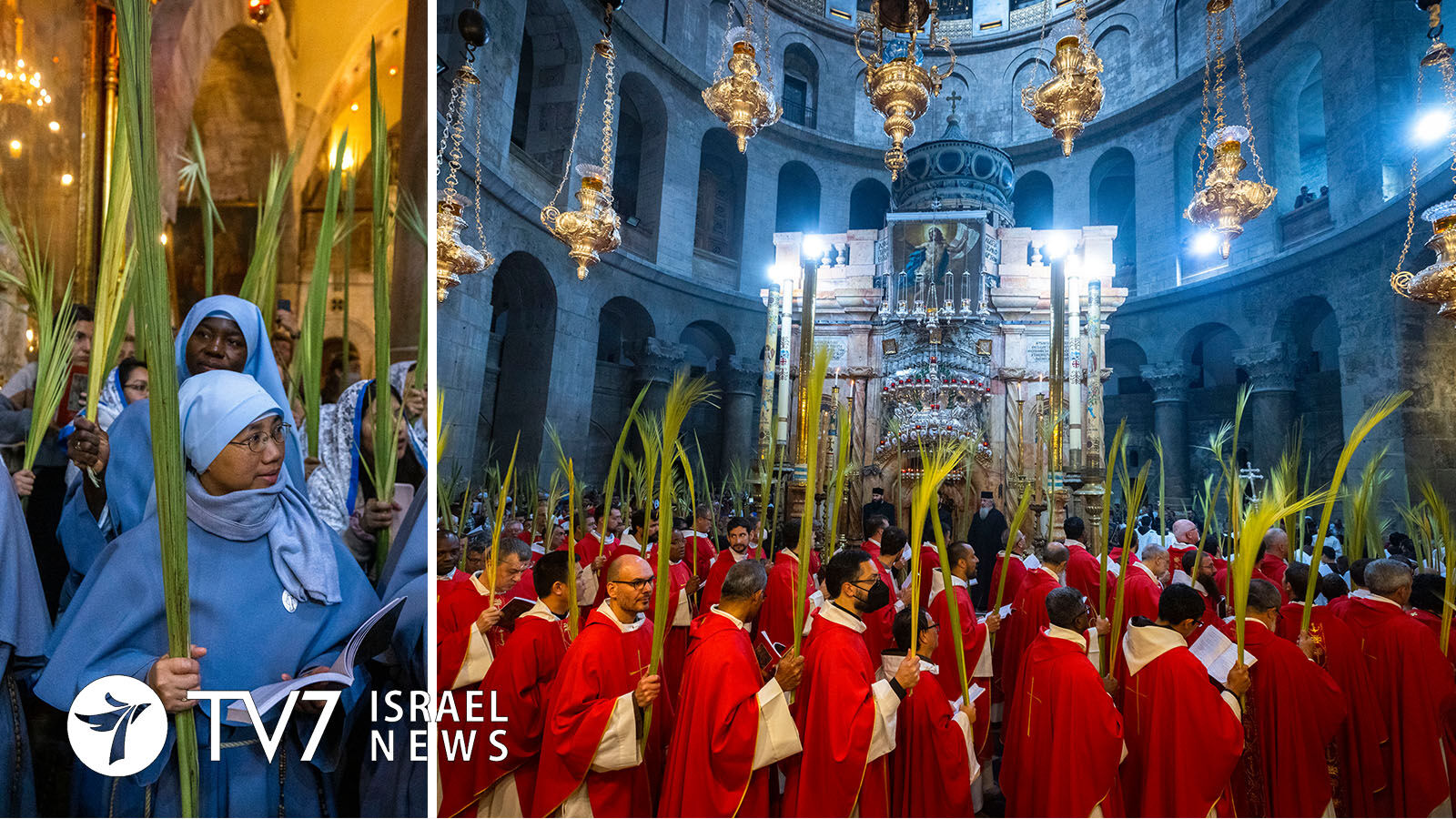Worshippers from around the world were once again able to attend Palm Sunday mass at Jerusalem’s Church of the Holy Sepulchre after two years of COVID-19 travel restrictions.
By Erin Viner
Around 500 Christians passed through the huge wooden doors of the historic church that is the focus of the most important festival in the Christian calendar.
The site is venerated by Christians as where Jesus was crucified at Calvary or Golgotha, and the placement of his tomb from which he was resurrected.
The land was consecrated on 13 September 335, and a church has been a major Christian pilgrimage destination since the fourth century.
It today serves as the headquarters of the Greek Orthodox Patriarch of Jerusalem, whose denomination shares custodianship with the Roman Catholic and Armenian Apostolic, Coptic Orthodox, Syriac Orthodox and Ethiopian Orthodox.
Palm Sunday commemorates the day the gospels say Jesus rode into Jerusalem and was hailed by the people, only to be crucified five days later.
Crowds of celebrants waved palm fronds, a traditional gesture to remember the branches laid down by the crowds welcoming Jesus to Jerusalem as recorded by the Gospels. They also lighted candles and kneeled at the marble Stone of the Anointing, where it is believed Jesus’s body was prepared for burial.
“After two years of COVID, of restrictions, of closed churches, today we are in a normal atmosphere. We have a lot of pilgrims, a lot of local Christians. We are very happy. For us, it’s a kind of resurrection,” the Latin Patriarch of Jerusalem Pierbattista Pizzaballa told Reuters.
“There’s no better place to celebrate Holy Week, seeing that this is where all the events originally took place, and also seeing as the COVID-19 pandemic is mostly resolving, so it’s safe enough to come this year,” said Joseph Obiajulu, 26, from New York City; while Francisca Teresinha de Jesus Fernandes Farias, 85, from Brazil, exclaimed, “I never believed I would visit the Holy Land.”
“It’s very exciting and full of emotions,” said Patricia Mercader, 20, from Spain. “Standing where He stood and feeling what He felt, there’s no words to explain it.”
Even though Israel deeply values its commitment to ensuring the freedom to practice all faiths, restrictions aimed at containing COVID-19 curbed international travel and curtailed large gatherings at churches, synagogues and mosques.
Just like ancient plagues, the current pandemic crossed all boundaries – leaving the houses of worship under varying degrees of lockdown and bereft of foreign pilgrims for much of the past two years.
Israel first sealed its borders to all non-citizens in March 2020 and the Ben Gurion International Airport closed down completely in January 2021. After partially re-opening to foreign visitors last May, Israel became the first country to completely bar foreign entry again on 28 November in response to the outbreak of the highly-contagious Omicron variant.
Foreign tourists have only recently been able to enter the country again.
Even though Holy Week is usually the high season for Christian pilgrims, there was only about 20% of the number of worshippers who normally fill the church, said Athanasius Macora, a Franciscan monk in his 23rd year as secretary of the commission that negotiates disputes among the churches with claims to the Church of the Holy Sepulchre. “Normally, where I am, we would have had seven to 10 groups a day, and now we’re averaging two,” he explained.
About 400,000 visitors entered the country last year, reflecting a sharp decline from a record high 4.55 million visitors in 2019 who contributed $7.2 billion to the national economy.
